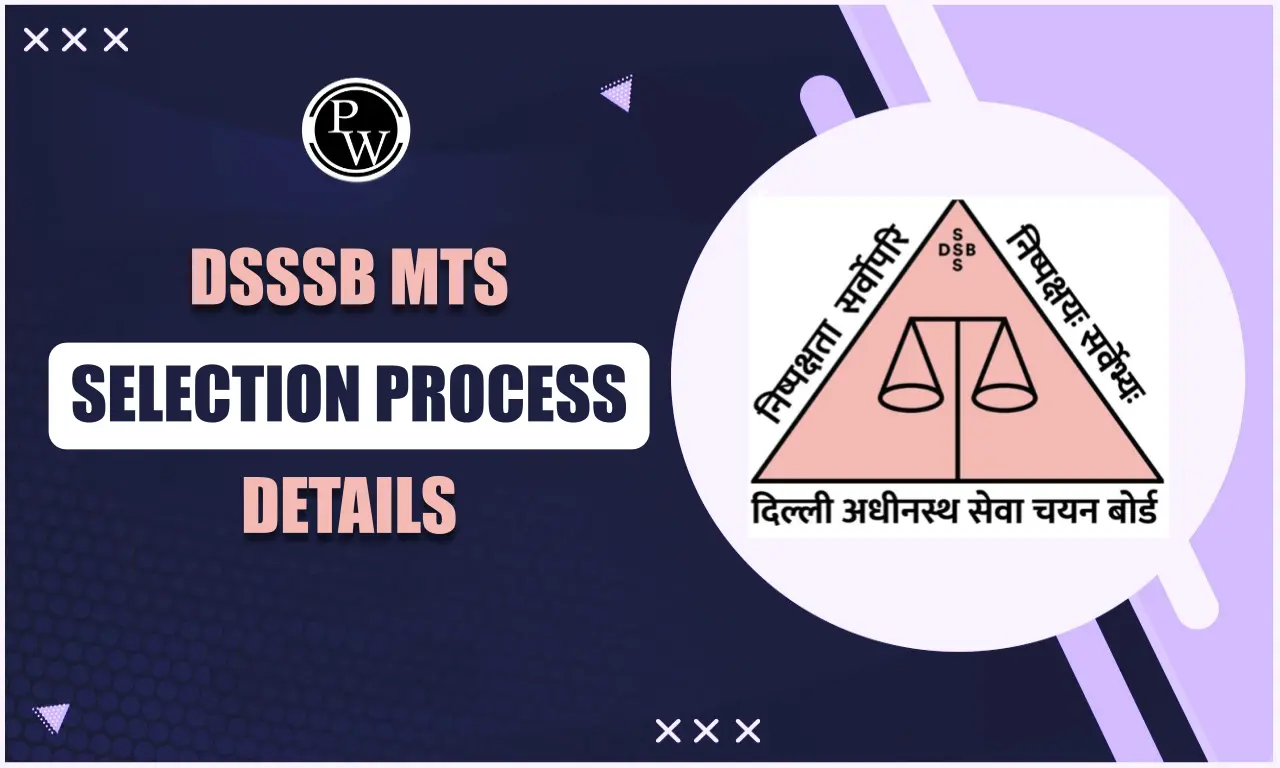
Quit India Movement: The Gowalia Tank Maidan in Mumbai, also called August Kranti Maidan, is where Mahatma Gandhi started the Quit India Movement. He and other leaders met here on August 8 and 9, 1942. After the movement, the government declared Congress illegal and raided its offices nationwide. Leaders were arrested, causing chaos.
Quit India Movement is a crucial event in the history which makes it a must read topic for the upcoming SSC and Railways exams as history contains great weightage in these exams.Quit India Movement Background
India was ruled by Britain for a long time. But Indians wanted to be free and independent. So, in 1942, Gandhi started the Quit India movement. He told the British to leave India and let Indians rule themselves. Lots of Indians joined this movement. They stopped working, going to school, and protested against the British. The British didn't like this, so they arrested Gandhi and many other leaders. The Quit India movement grew big and spread all across India. There were protests, strikes, and sometimes even fights everywhere. Even though the British arrested Gandhi and others, the movement kept going. The Quit India movement showed the British that Indians really wanted freedom. It made things difficult for them. Finally, in 1947, India got independence. The Quit India movement is an important part of India's history because it helped India become free.Quit India Movement Reasons
- After the Cripps mission failed, Gandhi proposed a resolution for British departure and a nonviolent protest against a potential Japanese invasion.
- The Congress Working Committee accepted this idea during a meeting in Wardha on July 14, 1942.
- The roots of this movement were not sudden but had been developing due to past events.
- World War 2 started in 1939, and Japan, an enemy of Britain, was approaching northeastern India.
- Britain's losses in Southeast Asia led to increased discontent among Indians, with rising food prices and scarcity.
- Britain threatened to use a "scorched earth policy" in Assam, Bengal, and Odisha if Japan approached, causing further distrust among Indians.
- When Britain withdrew from Southeast Asia without aiding locals against Japan, Indians lost faith in British protection.
- The failure of the Cripps Mission, which didn't offer solutions to India's issues, added to the dissatisfaction.
- Indian leaders wanted people to be prepared for a possible Japanese attack.
- Decades of mass protests under various Congress-affiliated groups laid the groundwork for the Quit India Movement, characterized by a more radical approach.
Quit India Movement Phases
- Before starting the Quit India movement, Congress slowly made plans and gained support for it. They did peaceful protests and changed how their organization worked.
- But the British government didn't want the movement to grow. The day after it began, they arrested almost all the top Congress leaders at once.
- The British made the Congress Working Committee, the All India Congress Committee, and the Provincial Congress Committees illegal using an old law called the Criminal Law Amendment Act of 1908.
- They also banned public meetings under Rule 56 of the Defence of India Rules.
- With the top leaders gone, younger and more militant members took charge.
- Aruna Asaf Ali, who wasn't well-known before, led the Congress committee session on August 9 and raised the flag.
The Quit India Movement had three phases:
- First Phase: It started with peaceful protests and nonviolent resistance, but the British quickly stopped them.
- Second Phase: Then, people in rural areas, like farmers, rebelled. They disrupted things like railroads and telegraph lines to make it hard for the British to control.
- Third Phase: In some places, people set up their own governments to rule during the rebellion. This happened in areas like Ballia, Tamluk, and Satara.
Quit India Movement Impact
- New leaders like Ram Manohar Lohia, JP Narayan, Aruna Asaf Ali, and Usha Mehta emerged after the top Congress leaders were arrested.
- The authorities used violence to stop the Quit India Movement, leading to nearly 100,000 arrests, including women and children.
- The INC was declared illegal and banned by the government.
- Gandhi was released from house arrest in 1944 due to poor health.
- Loyalty to the government declined significantly, showing the depth of nationalism.
- Despite limitations, there were sporadic incidents of violence and damage to government property during the movement.
- The movement proved that governing India without the consent of its people was no longer feasible.
- It also pushed for the demand for complete and immediate independence.
- People showed remarkable bravery and continued the movement despite repression.
Quit India Movement Limitation
Some parties opposed the Quit India Movement, including the Muslim League, the Communist Party of India, and the Hindu Mahasabha. Subhas Chandra Bose formed the Indian National Army (INA) and the Azad Hind government separately. C Rajagopalachari resigned due to his disagreement with the idea of complete independence. The Indian bureaucracy and princely states also provided limited support to the movement.Quit India Movement Significance
The Quit India Movement persisted without the traditional Congress leadership. People from various backgrounds, including students, workers, and peasants, strongly supported the movement, showcasing the depth of nationalism in India. As a result of the movement, British authorities started taking discussions about Indian independence more seriously.Quit India Movement Facts
- The Quit India Movement, also called the India August Movement, was launched by the Indian National Congress (INC) led by Mahatma Gandhi on August 8, 1942.
- The movement's slogans were 'Quit India' or 'Bharat Chodo', and Gandhi urged people with the slogan 'Do or die'.
- It aimed to peacefully urge the British to grant India independence, following the Congress ideology of non-violence.
- The Quit India Resolution was passed by the Congress Working Committee on August 8, 1942, in Bombay, with Gandhi named as the leader.
- The resolution demanded an immediate end to British rule, formation of a provisional government, and civil disobedience against British rule.
- Gandhi issued instructions to different groups: government servants were to proclaim loyalty to the INC, soldiers were urged not to fire on compatriots, peasants were advised regarding rent payment, students were given the option to leave studies, and princes and people of princely states were called upon to support the movement.
| Other Related Links | |
| Tiger Reserves in India | National Parks in India |
| Biosphere Reserves in India | Elephant Reserves in India |
Quit India Movement FAQs
Who started the Quit India movement?
The Quit India movement was started by Gandhi Ji.
What is the Quit India movement?
The Quit India Movement, also known as the August Kranti Movement, began at the Bombay session of the All India Congress Committee meeting. Its goal was to end British rule in India and achieve independence.
Why did the Quit India movement fail?
The Quit India Movement faced relative failure as it lacked support from key sectors such as the bureaucracy and army, along with opposition from parties like the Muslim League, Communist Party, and Hindu Mahasabha.
What were the reasons for the failure of Quit India Movement?
The Quit India movement, while a significant expression of popular protest, was unable to achieve immediate British withdrawal due to the colonial government's brutal suppression, the mass arrest of Congress leaders, and the lack of a clear, coordinated plan of action. A lack of cooperation from influential organizations like as the Communist Party and the Muslim League, as well as an increase of unplanned, violent demonstrations that were hard to maintain without direction and a clear strategy for peaceful mass action, hampered the campaign.
Who supported the Quit India resolution of 1942?
At a meeting of the All-India Congress Committee in Mumbai on August 8, 1942, Mahatma Gandhi made a strong demand to abolish British rule and started the Quit India Movement. Jawaharlal Nehru introduced the 'Quit India' motion at the 1942 Congress Bombay Session.
What was the main object of the Quit India Movement?
The Quit India Movement's primary goal, expressed up by Mahatma Gandhi's slogan, "Do or Die," was to force the British to leave India right away and ensure total independence from British domination. The campaign, which was started on August 8, 1942, affirmed India's right to self-determination and attempted to bring the Indian populace together to oppose British rule.
Who gave the slogan "quit India"?
Gandhi adopted the phrase "Quit India" for his movement, which he started on August 8, 1942, demanding an immediate end to British rule, but Yusuf Meherally, a socialist leader and trade unionist, came up with it first.
How long did Quit India last?
An overview of the movement and its impact on the fight for Indian independence is provided by historian Sarah Ansari. The Indian National Congress's last major campaign of civil disobedience against British authority was the Quit India movement, which took place between 1942 and 1944.
🔥 Trending Blogs
Talk to a counsellorHave doubts? Our support team will be happy to assist you!

Check out these Related Articles
Free Learning Resources
PW Books
Notes (Class 10-12)
PW Study Materials
Notes (Class 6-9)
Ncert Solutions
Govt Exams
Class 6th to 12th Online Courses
Govt Job Exams Courses
UPSC Coaching
Defence Exam Coaching
Gate Exam Coaching
Other Exams
Know about Physics Wallah
Physics Wallah is an Indian edtech platform that provides accessible & comprehensive learning experiences to students from Class 6th to postgraduate level. We also provide extensive NCERT solutions, sample paper, NEET, JEE Mains, BITSAT previous year papers & more such resources to students. Physics Wallah also caters to over 3.5 million registered students and over 78 lakh+ Youtube subscribers with 4.8 rating on its app.
We Stand Out because
We provide students with intensive courses with India’s qualified & experienced faculties & mentors. PW strives to make the learning experience comprehensive and accessible for students of all sections of society. We believe in empowering every single student who couldn't dream of a good career in engineering and medical field earlier.
Our Key Focus Areas
Physics Wallah's main focus is to make the learning experience as economical as possible for all students. With our affordable courses like Lakshya, Udaan and Arjuna and many others, we have been able to provide a platform for lakhs of aspirants. From providing Chemistry, Maths, Physics formula to giving e-books of eminent authors like RD Sharma, RS Aggarwal and Lakhmir Singh, PW focuses on every single student's need for preparation.
What Makes Us Different
Physics Wallah strives to develop a comprehensive pedagogical structure for students, where they get a state-of-the-art learning experience with study material and resources. Apart from catering students preparing for JEE Mains and NEET, PW also provides study material for each state board like Uttar Pradesh, Bihar, and others
Copyright © 2025 Physicswallah Limited All rights reserved.
Get App









